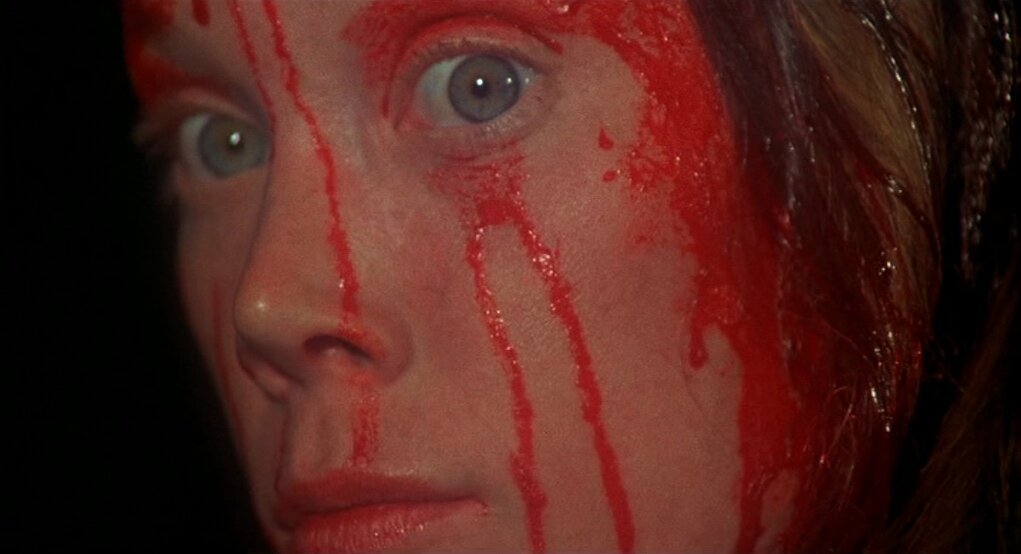The Final Girl
By Mariel Wiley
Happy Death Day (2017)
Autumn is upon us once again, and with it comes the float of ochre leaves onto pavement, the bite of future snowfall in every gust of wind, and the yellow eyes of Jack O’ Lanterns and black cats peering out from creaking porches. As the change in seasons whisks many back into their homes to shelter from the cold, another serotinal tradition returns: the horror film binge.
I, myself, am a huge fan of our yearly return to Fright-a-Thon season, yet I cannot help but to watch these beloved, wretched films with a critical eye. My main observation being — unsurprisingly — the burden placed relentlessly upon female (or non-male) characters in facing the story’s greatest demons.
Horror serves as an unexpected platform for evaluating the cultural norms present in our society today and in days long gone. The audience arrives in the theater expecting to be disturbed: a willingness to be in a state of discomfort that allows filmmakers and actors the freedom to explore darker themes than are tolerable in, say, your typical rom-com. Films within this genre are equaled only by science fiction in coaxing viewers to suspend their disbelief long enough to evaluate societal norms disguised as pig’s blood and haunted hallways. Their plots are built upon ancient stories featuring humankind’s oldest lessons and morals. Unsurprisingly, then, is the reality that characters in horror films must often stand for motifs greater than themselves; encouraging us to question our understanding and acceptance of the institutions we operate within.
These films’ frequent use of female protagonists is not by chance, and neither is the all-too-common third act that leaves her alone at the mercy of monsters. This happens so often that she’s become known as the “Final Girl.” She’s often characterized by a few recognizable traits that play some role in her supposed deservedness of such violence, or justifying her ability to escape it.
Carrie (1976)
The Final Girl is almost always demure and virginal — innocent, unlike her fellow female cast mates doomed to perish as a result of their embodiment of moral sin. Although her actions would render her interest in sex nonexistent, her body is still objectified by wardrobe and cinematography. This sexualization feels like violation, in a way: she’s blissfully unaware of the portrayal of her virtue as something to be marred (even though the concept of purity is largely nonsensical in the first place). As experienced by the titular protagonist in the 1976 cult classic Carrie, her transition into adulthood is seen as a sin in and of itself, with natural events like menstruation and puberty being punished by other characters representing social pressure and paranoia.
And, god forbid, if the Final Girl is to take agency over her own body and sexuality, she risks accusations of witchcraft and deviation from a moral life, a fate portrayed by Anya Taylor-Joy’s Thomasin in Robert Eggers’ The VVitch. Her behavior, deemed unacceptable by centuries of stifling Western ideologies, ultimately leads her to a gory and brutal untimely demise. However, if she somehow escapes the normal progression of maturity, she stands the chance of survival, because as anyone who’s watched Scream knows: the first rule of surviving a horror movie is that you can never have sex.
However, the second notable trait of the Final Girl is a more complex one: her intelligence. This quality can be used either to subvert the Final Girl trope or reinforce it, depending on the specific way the protagonist exhibits it. In Ridley Scott’s Alien, the character of Ripley was originally written without the designation of gender, effectively dodging the objectification and belittlement of the male gaze (except for that scene at the end — why do we need to see underwear in outer space?). Ripley has agency and is shown respect by her peers, who treat her both as an equal and a leader. Her quick thinking and grace under pressure are the key plot-driving factors, rather than the state of her body and sexuality. Despite the fact that she and her brave little feline friend, Jones, escape the Xenomorph, we realize that even a surface-level analysis of her character reveals a more realistic depiction of women — the terms of her survival still fell within the rules of horror via her apparent asexuality.
The Witch (2015)
Alien (1979)
In reality, women possess a multiplicity of traits coexisting in harmony. Intelligence and sexuality, authority and kindness, bravery and humility. We are multifaceted, complex beings, and horror films can and should use their unique stylistic freedoms to show this on screen.
As we enter a renaissance for the genre, I can’t wait to see what a new generation of filmmakers do to breathe new life into age-old tropes and themes. Gone are the days of grungy slasher films and gratuitous jump-scares as we usher in a new era of decadently disturbing cinema. Recent films like Midsommar and Happy Death Day show an exciting shift in the paradigm, inviting audiences along a chilling cerebral journey through the eyes of female protagonists. Their fates are never sealed through the judgment of their peers, but rather by the integrity of their humanity and their boundless courage in the face of monsters great and small. ◆




